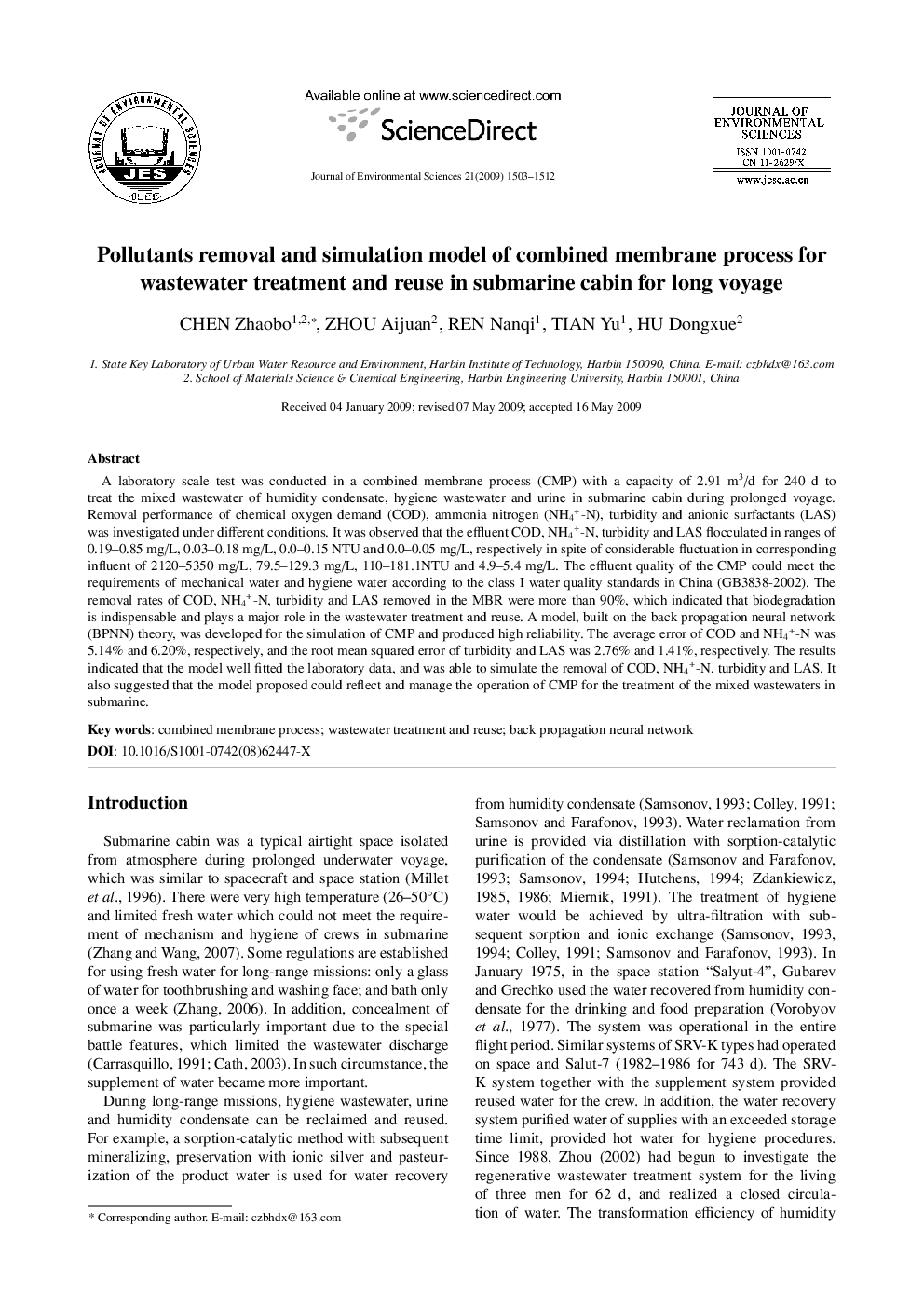| Article ID | Journal | Published Year | Pages | File Type |
|---|---|---|---|---|
| 4455410 | Journal of Environmental Sciences | 2009 | 10 Pages |
A laboratory scale test was conducted in a combined membrane process (CMP) with a capacity of 2.91 m3/d for 240 d to treat the mixed wastewater of humidity condensate, hygiene wastewater and urine in submarine cabin during prolonged voyage. Removal performance of chemical oxygen demand (COD), ammonia nitrogen (NH4+-N), turbidity and anionic surfactants (LAS) was investigated under different conditions. It was observed that the effluent COD, NH4+-N, turbidity and LAS flocculated in ranges of 0.19–0.85 mg/L, 0.03–0.18 mg/L, 0.0–0.15 NTU and 0.0–0.05 mg/L, respectively in spite of considerable fluctuation in corresponding influent of 2120–5350 mg/L, 79.5–129.3 mg/L, 110–181.1NTU and 4.9–5.4 mg/L. The effluent quality of the CMP could meet the requirements of mechanical water and hygiene water according to the class I water quality standards in China (GB3838-2002). The removal rates of COD, NH4+-N, turbidity and LAS removed in the MBR were more than 90%, which indicated that biodegradation is indispensable and plays a major role in the wastewater treatment and reuse. A model, built on the back propagation neural network (BPNN) theory, was developed for the simulation of CMP and produced high reliability. The average error of COD and NH4+-N was 5.14% and 6.20%, respectively, and the root mean squared error of turbidity and LAS was 2.76% and 1.41%, respectively. The results indicated that the model well fitted the laboratory data, and was able to simulate the removal of COD, NH4+-N, turbidity and LAS. It also suggested that the model proposed could reflect and manage the operation of CMP for the treatment of the mixed wastewaters in submarine.
